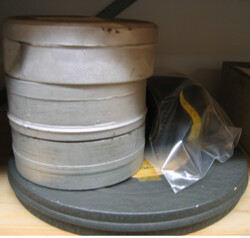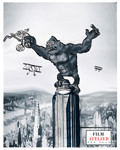 Nowadays there aren't many filmmakers left that actually shoot their footage using film. Most make digital recordings, which are then edited digitally, and even in film theatres and cinemas, digital film screening is becoming commonplace. At most, screening copies are produced in the laboratory.
Nowadays there aren't many filmmakers left that actually shoot their footage using film. Most make digital recordings, which are then edited digitally, and even in film theatres and cinemas, digital film screening is becoming commonplace. At most, screening copies are produced in the laboratory.
Not even that long ago, things were quite different. Films were shot on celluloid film rolls, edited on a Steenbeck table, taken to the laboratory, and finally screened in the cinema hall with a celluloid copy. Many filmmakers and editors will still have one of those big blue Steenbeck tables tucked away under a plastic cover, somewhere in the house or the workplace, in one piece or disassembled. Or it may not have survived the last time he or she moved house. But the film cans will have moved along of course, and are now stored somewhere under the bed, in some cupboard in the attic or in crates in the cellar. Yet it will have been some time since those cans were last opened, let alone that the films were projected; so who knows what films are contained in which cans? Is it the camera or duplicate negative, final mix with sound, or just the music, titles and overs, or perhaps the actual screening version? And had the producer saved a copy at the time, or had he not? In what condition is the material anyway? Has it acidified, discoloured or shrunk, or is it actually still in pretty good condition?
For filmmakers (or their descendants) familiar with this situation, and who would like to sort out the chaos and to see the film material preserved, Film Atelier Den Haag is here to help. Click here to read more.
It is also possible to rent the 16 and 35mm Steenbeck editing table for a modest fee, whenever they are not being used by the Atelier. This can be per part-day, whole day or week. Enquire about the possibilities. The tables are now well into their third life, but are properly serviced by Steenbeck technicians.


 De liefde voor en kennis van film en geschiedenis vormen de rode draad die alle werkzaamheden binnen Film Atelier Den Haag verbindt.
De liefde voor en kennis van film en geschiedenis vormen de rode draad die alle werkzaamheden binnen Film Atelier Den Haag verbindt.

